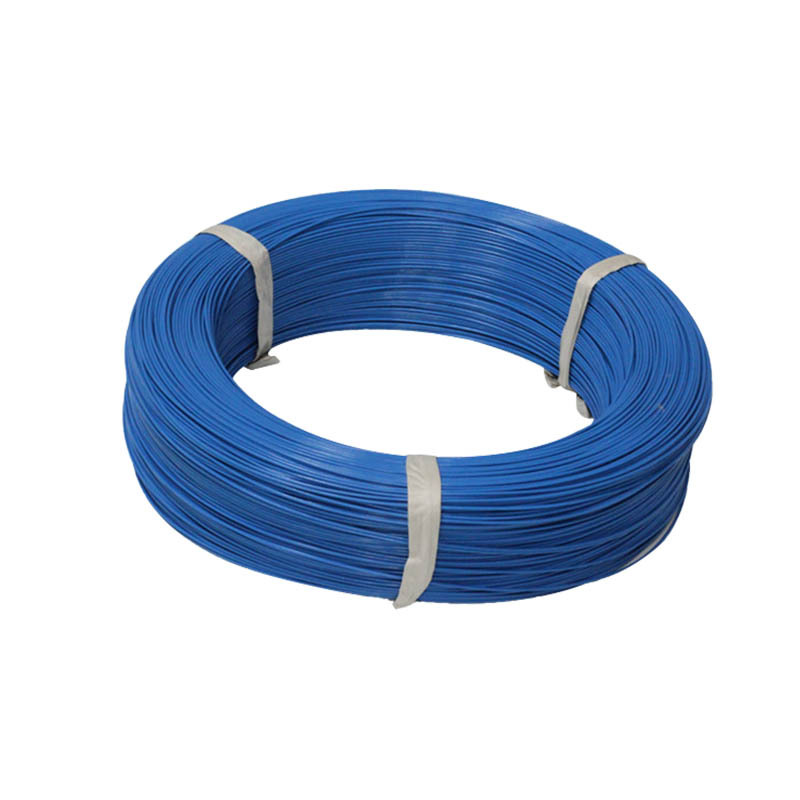When choosing high temperature cables, especially for demanding industrial applications, ensuring the right selection is crucial for performance, safety, and cost-effectiveness. Whether you're working in aerospace, automotive, or manufacturing, high temperature cables need to withstand extreme conditions without failure. Here are the five common mistakes to avoid when selecting teflon high temperature cable or other types of high temperature cables, and how to choose wisely.

1. Ignoring the Temperature Rating
One of the most significant mistakes is overlooking the cable’s temperature rating. Different environments demand different levels of heat resistance. Many assume that all high temperature cables can withstand the same range of heat, which is incorrect. For instance, teflon high temperature cable is known for its exceptional heat resistance, often up to 250°C, making it suitable for harsh environments like aerospace and chemical processing. Selecting a cable with a lower heat resistance could lead to insulation breakdown, reducing the lifespan of the cable and risking failure.
2. Not Considering Chemical Resistance
In many industrial environments, high temperature cables may be exposed to chemicals or other corrosive substances. Teflon high temperature cable offers not only heat resistance but also chemical resistance, making it an ideal choice in applications where exposure to harsh substances is likely. Skipping over this factor can result in corrosion of the cable’s insulation, reducing its efficiency and lifespan. When purchasing cables, especially from teflon high temperature cable manufacturers, always inquire about chemical exposure and compatibility.
3. Overlooking Flexibility Requirements
High temperature cables can be rigid or flexible, depending on their design and materials. Not considering the flexibility required for your installation can lead to improper fits or cable breakage. For example, if your application requires frequent movement, using a rigid cable could lead to cracks in the insulation. Teflon high temperature cable tends to offer excellent flexibility along with durability. Therefore, when searching for teflon high temperature cable for sale, ensure you choose one that meets the flexibility standards for your application.
4. Underestimating Voltage and Electrical Load Needs
Another critical mistake is not matching the cable’s voltage rating with your equipment’s requirements. High temperature cables must not only handle heat but also the electrical load. Using a cable rated for lower voltage can result in short circuits or system failures. High voltage applications require specialized high temperature cables. Consult teflon high temperature cable manufacturers for cables rated for both heat and specific voltage levels to ensure compatibility and safety.
5. Choosing the Wrong Insulation Material
Choosing the right insulation material is as important as the cable itself. Materials like teflon offer both high heat resistance and excellent insulation properties, making them a superior choice in many high temperature environments. Some might opt for cheaper materials like PVC or silicone, thinking they’ll perform similarly, but these materials typically degrade faster under extreme heat. Teflon high temperature cable is more reliable for long-term performance and should be the go-to choice in critical applications. Always verify the insulation quality and durability before making your purchase.
Choosing the right high temperature cable for your application involves more than just picking a cable that can withstand heat. You must account for chemical exposure, flexibility, voltage rating, and insulation materials. Working closely with teflon high temperature cable manufacturers can help ensure that your chosen cable meets all the required performance specifications. By avoiding these common mistakes, you can prevent downtime, extend the life of your equipment, and ensure a safer and more efficient operation.
Whether you're buying teflon high temperature cable for sale or custom-ordering cables for specific industrial needs, proper selection is key to optimal performance.


